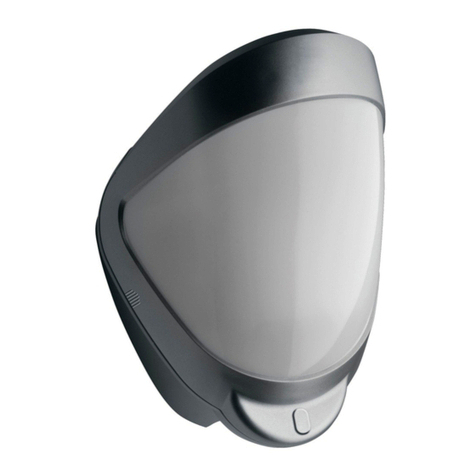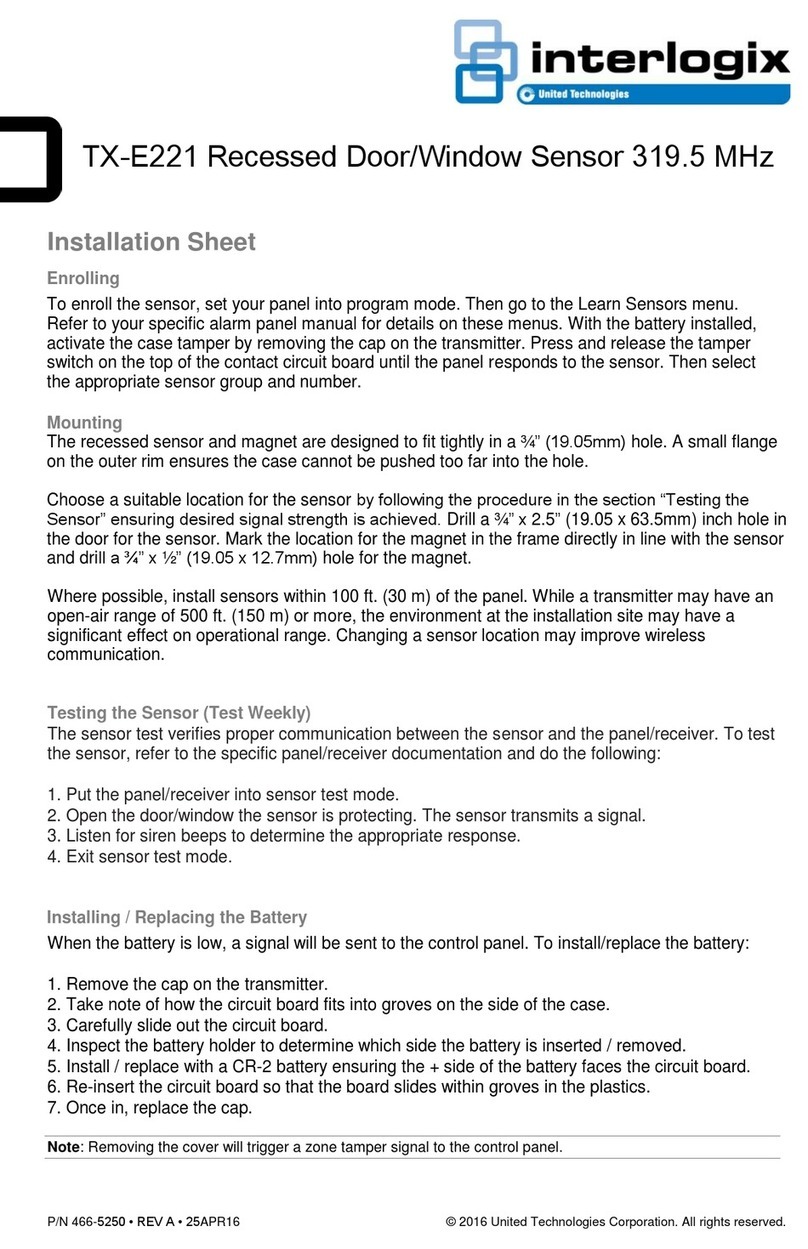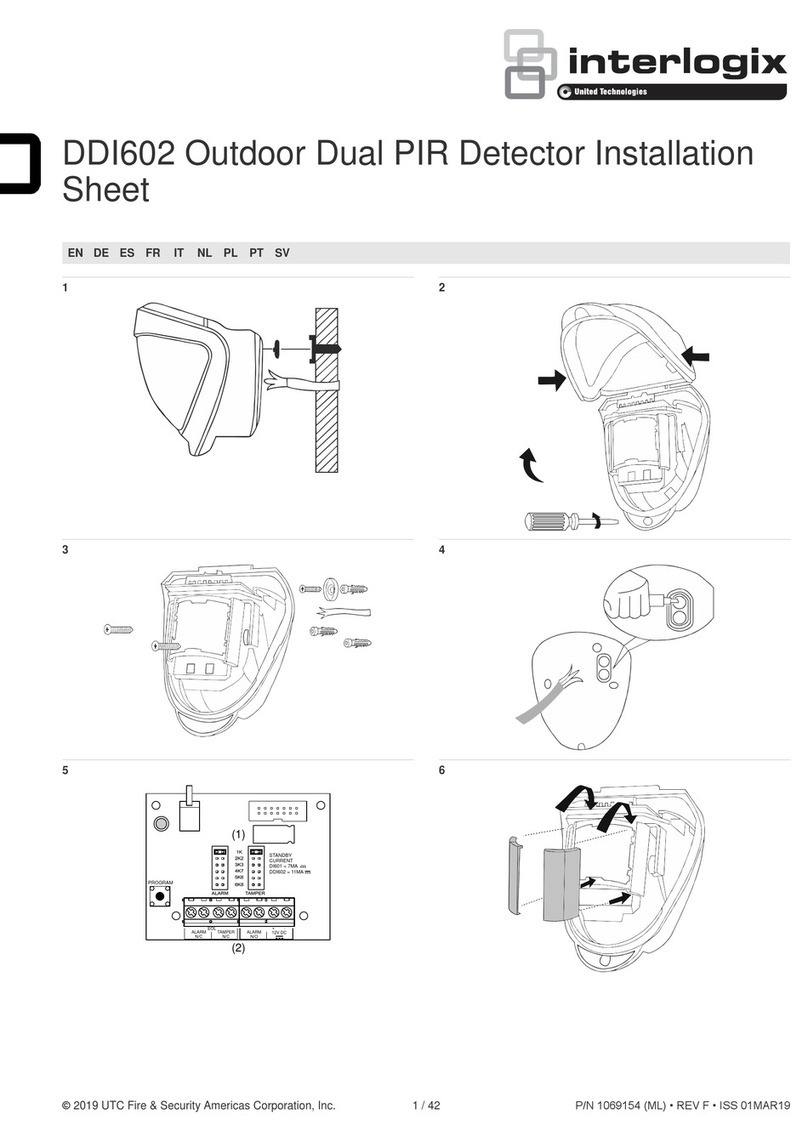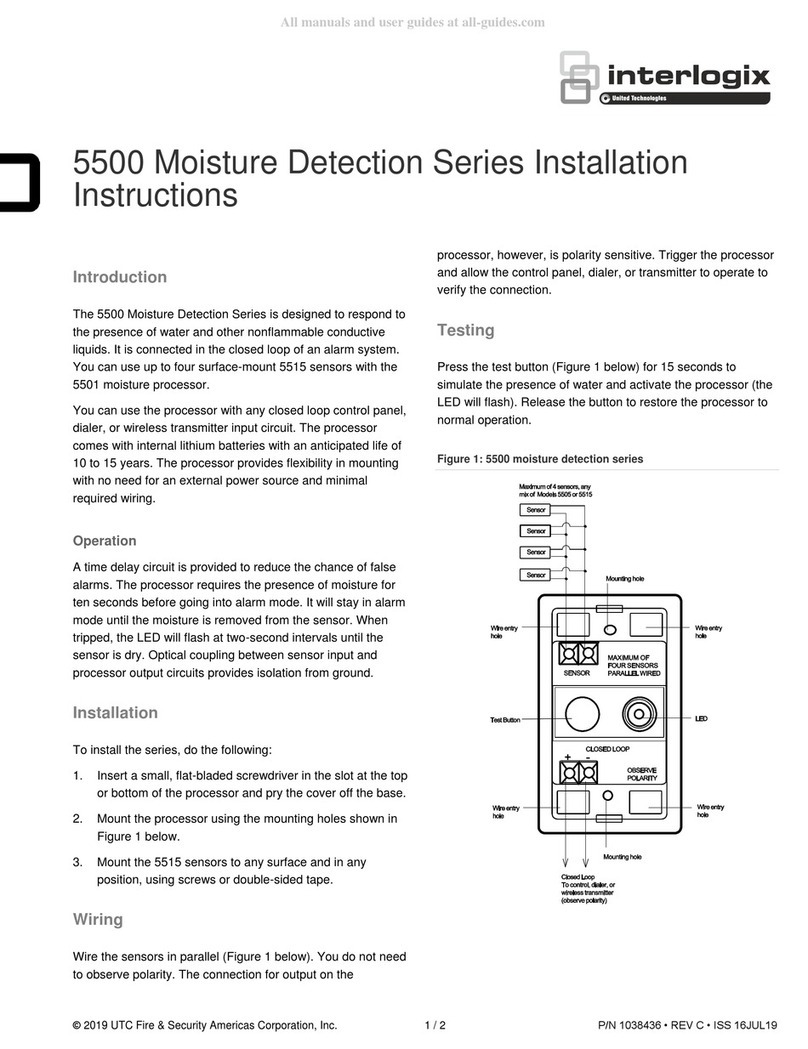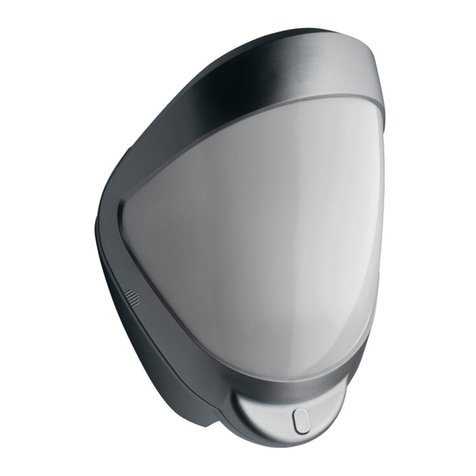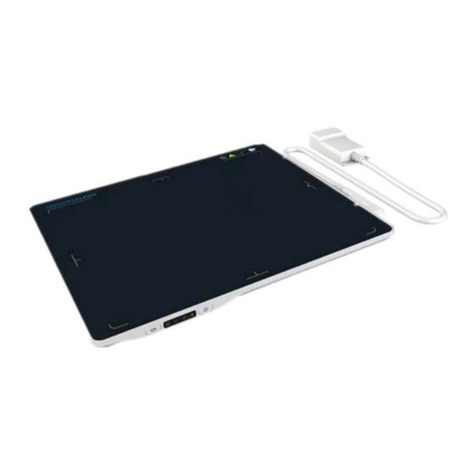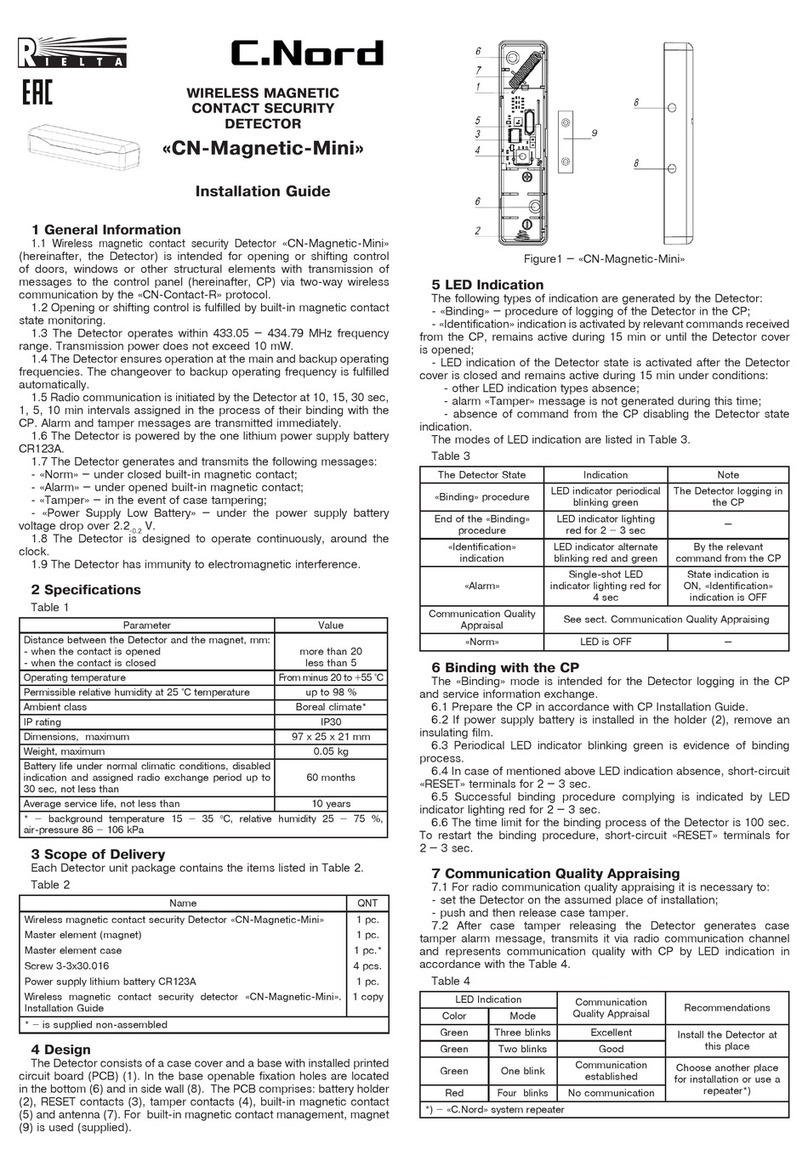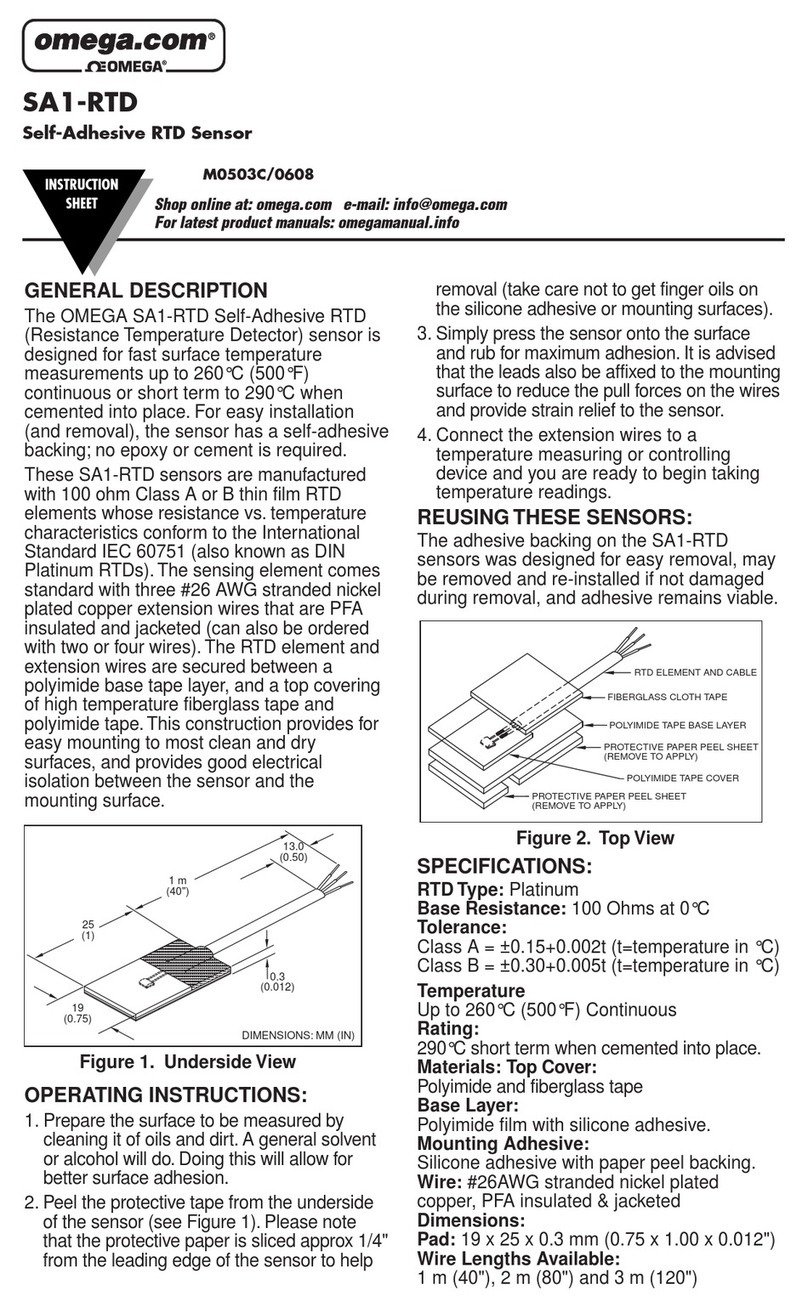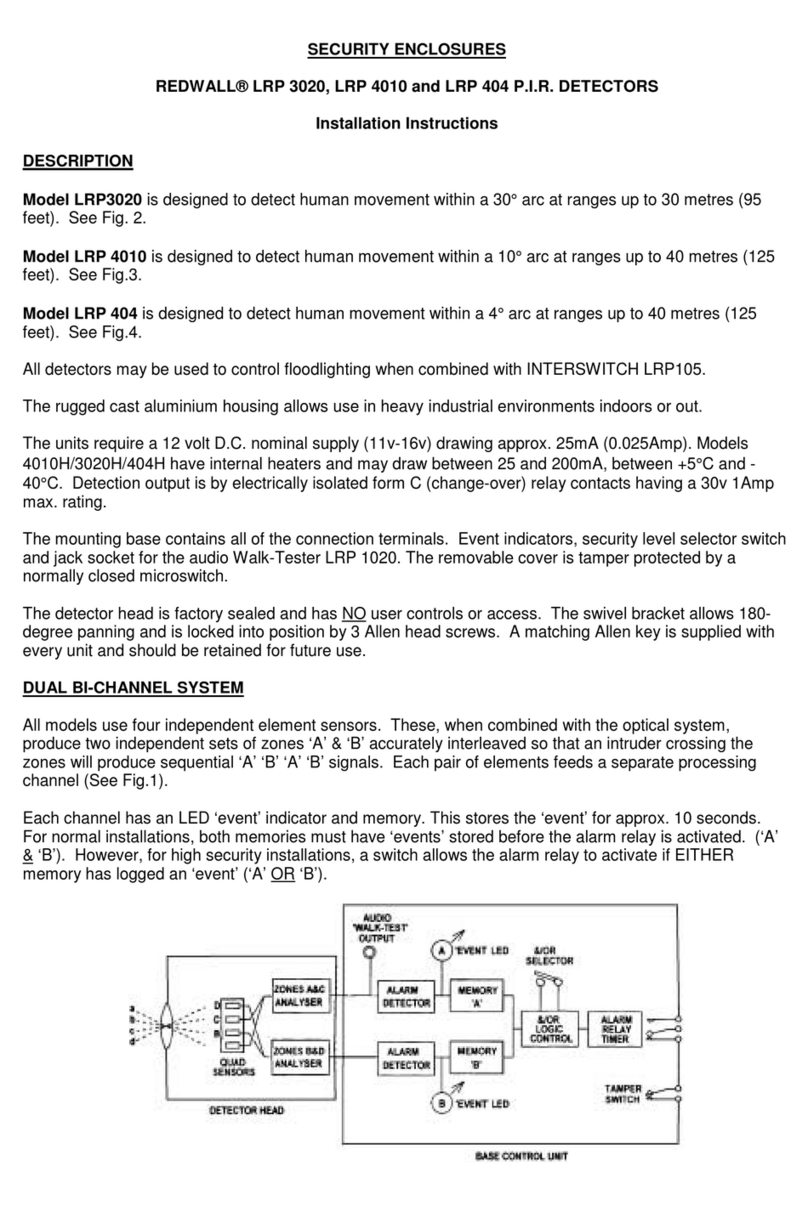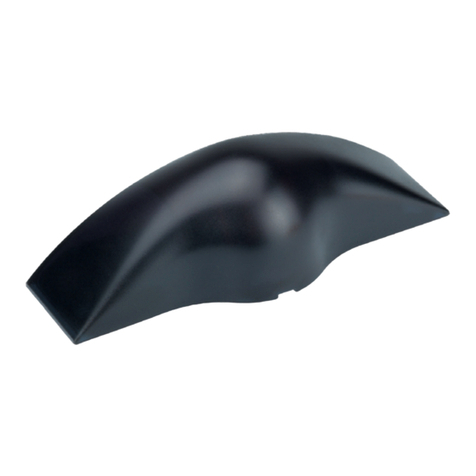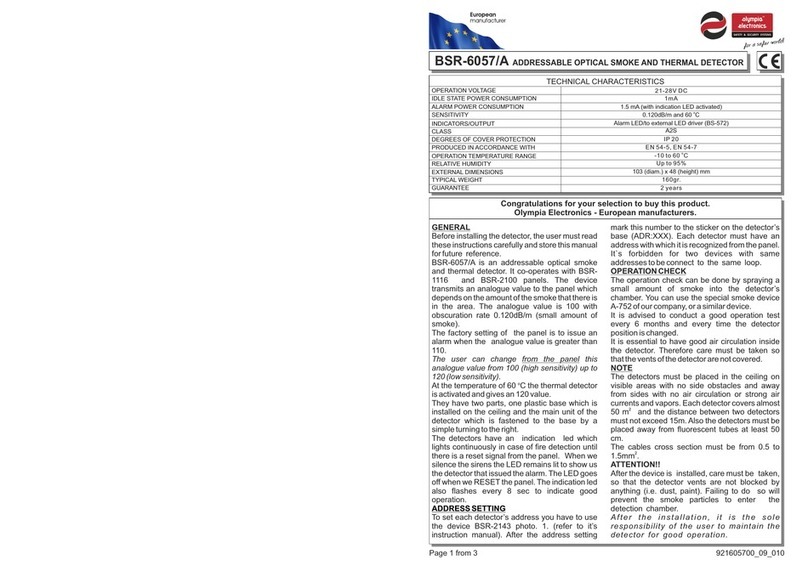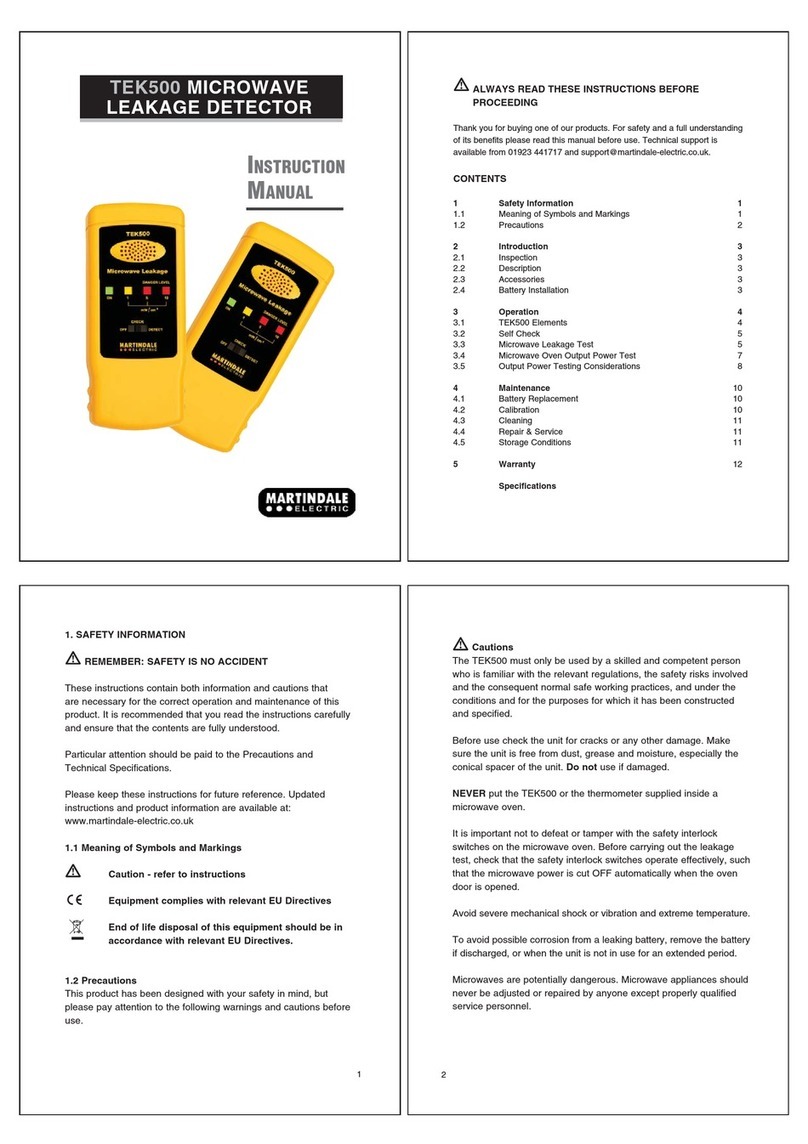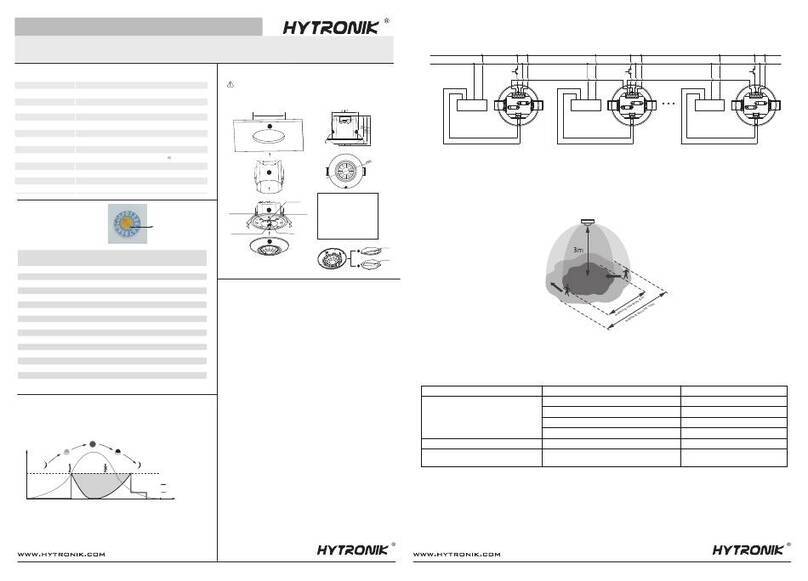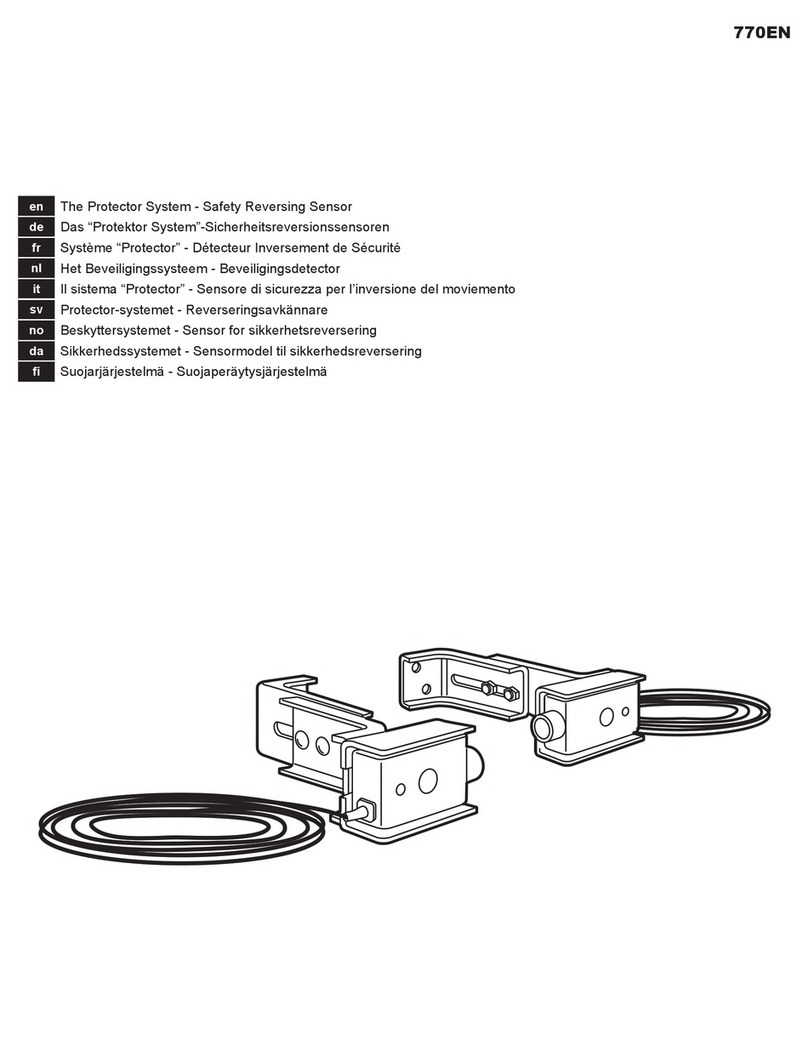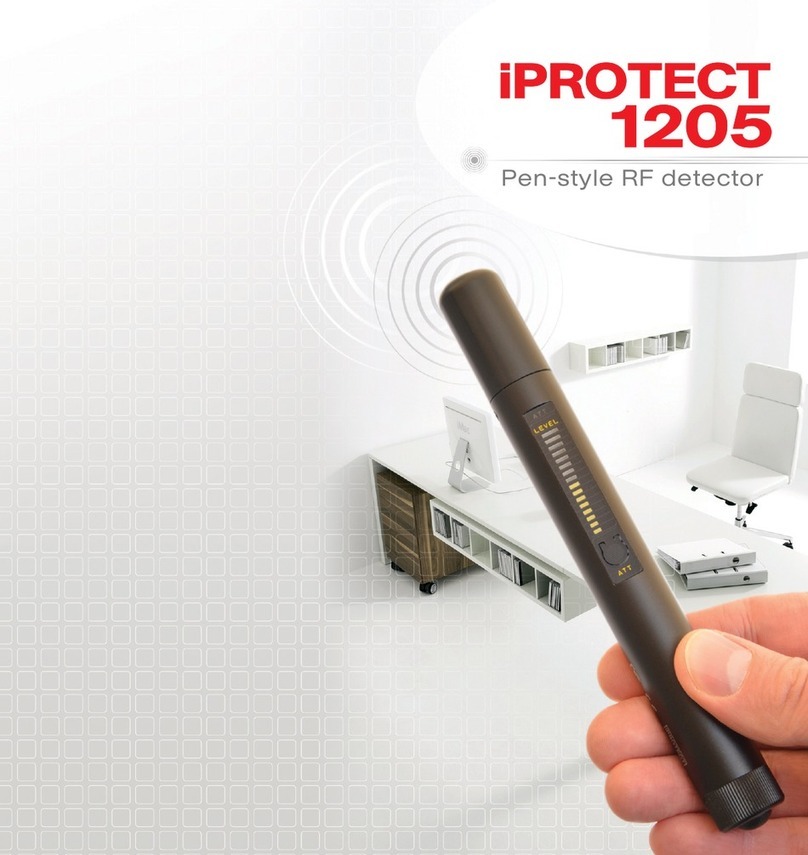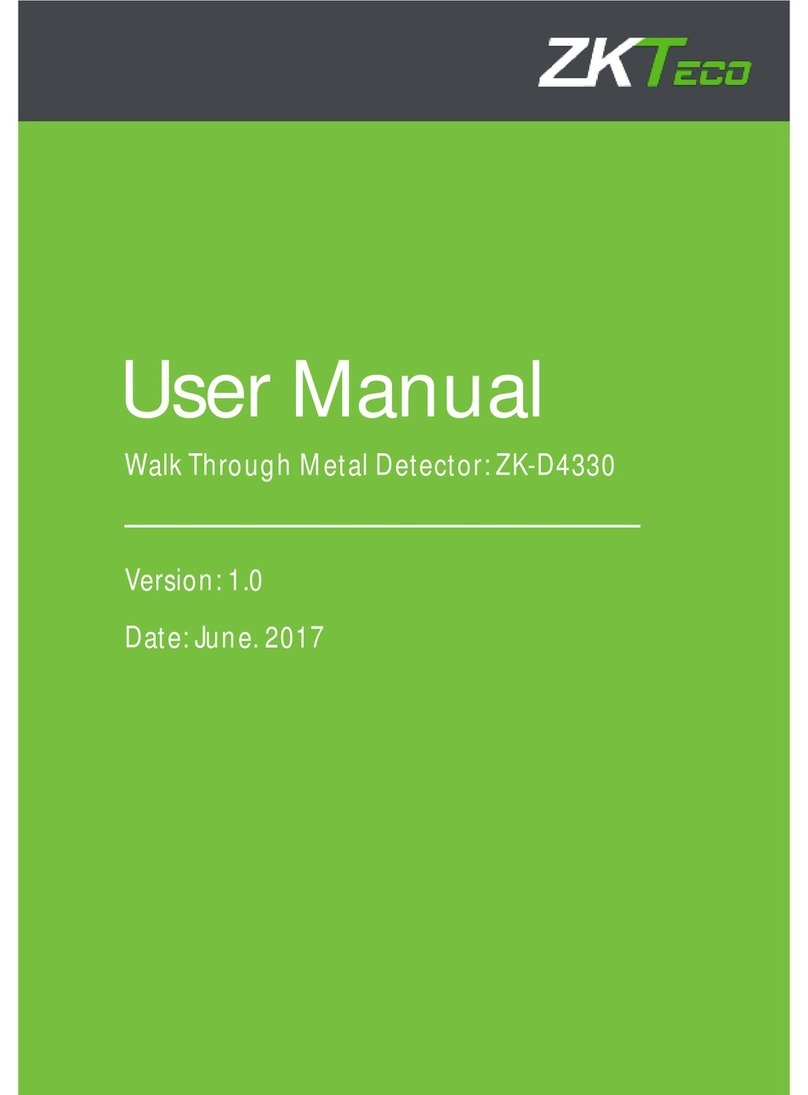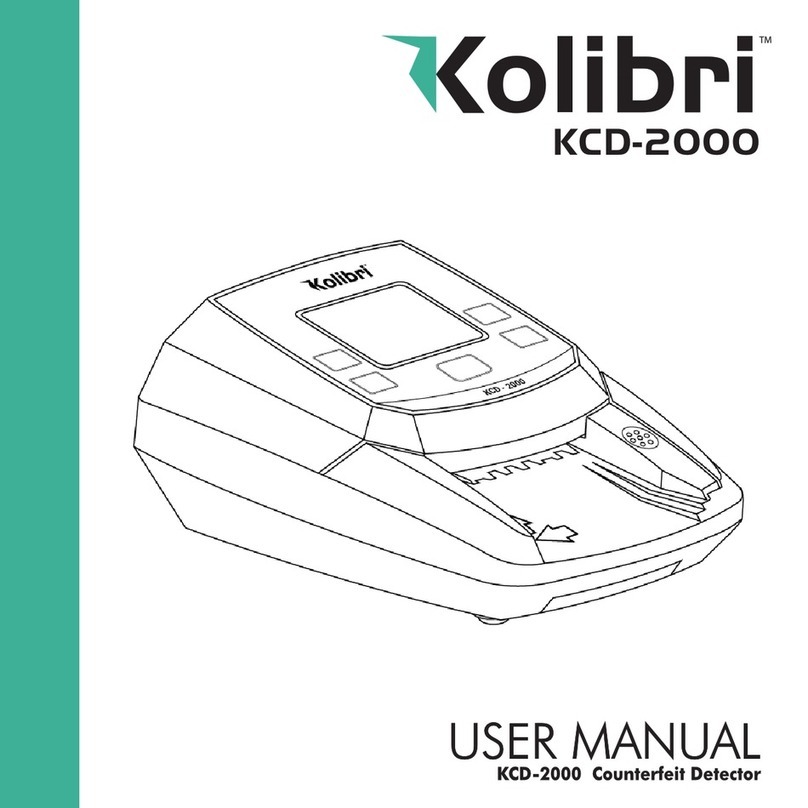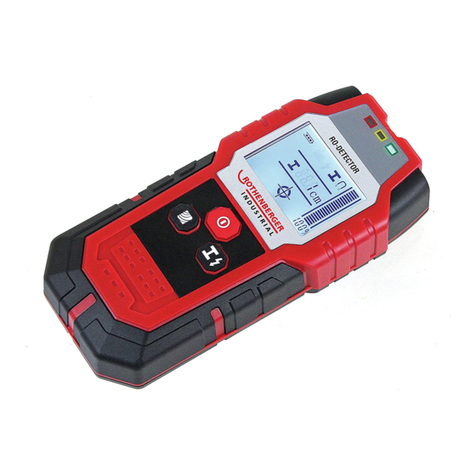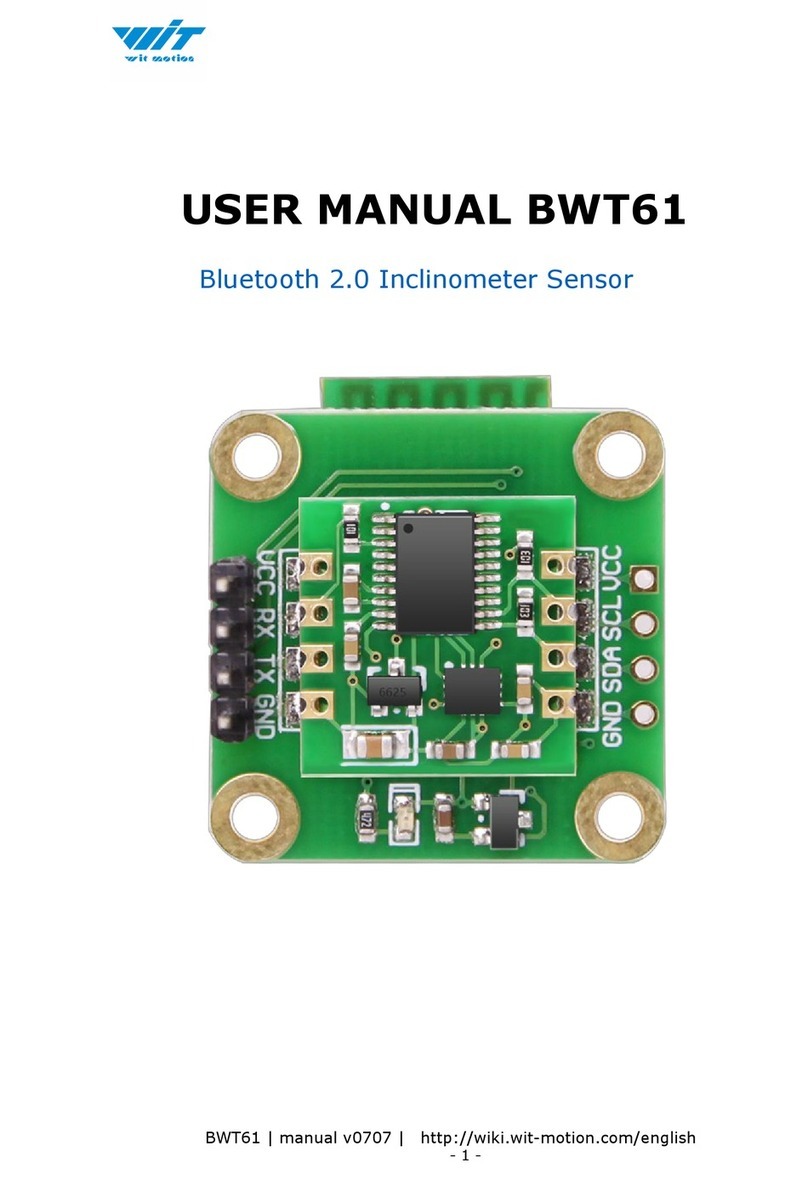
© 2019 United Technologies Corporation 1 / 2 P/N 3102597-EN • REV 001 • ISS 07MAR19
SIGA-OSHD Intelligent
Multisensor Optical-Heat
Detector Installation Sheet
Description
The Signature Series SIGA-OSHD Intelligent Multisensor Optical-Heat
Detector is an intelligent device that contains an optical smoke sensor
and a rate-of-rise heat sensor with a fixed temperature setting. The
detector analyzes data from both the heat sensor and the sensing
chamber to recognize smoke from a fire while ignoring nuisance
non-fire sources and whether to initiate an alarm to the Fire Alarm
Control Panel. This device can be operated as a single detector using
smoke or heat to initiate an alarm or as a split sensor with heat and
smoke initiating separate signals.
LED indicator. The LED indicator (see Figure 1 below) displays the
following states:
•Normal: Green LED indicator flashes, no action.
•Alarm/active: Red LED indicator flashes, evacuate the area.
Figure 1: SIGA-OSHD features
1. Self-locking tab
2. LED indicator
Installation
Notes
•This detector does not operate without electrical power. As fires
frequently cause power interruption, discuss further safeguards
with the local fire protection specialist.
•This detector does not sense fires in areas where smoke or heat
cannot reach the detector. Smoke or heat from fires in walls, roofs,
or on the opposite side of closed doors may not reach the detector.
•The heat sensor in this device provides a source of supplemental
information. The heat sensor by itself does not provide life safety
protection.
•To ensure proper operation, store the detector within the
recommended ranges. Allow the detector to stabilize to room
temperature before applying power.
•The dust cover (supplied) must remain on the detector during
installation and be removed prior to commissioning and service.
The dust cover is not a substitute for removing the detector during
new construction or heavy remodeling.
•Do not use smoke detectors with detector guards unless the
combination has been evaluated and found suitable.
•In Canada, install according to the CAN/ULC-S524 Standard for
the Installation of Fire Alarm Systems, the CSA C22.1 Canadian
Electrical Code, and the local authority having jurisdiction.
•Upon completion of the original installation and following any
modifications or additions to the system, perform a calibrated
sensitivity test per NFPA code. Signature Series devices can
perform this test and the panel can generate a system sensitivity
report.
To install the detector:
1. Install and wire the base, as described on the installation sheet
supplied with the base.
2. Remove the serial number label from the detector and attach it to
the project documentation.
3. Attach the detector to the base by rotating the detector clockwise
until it snaps into the locked position.
Testing
Before testing, notify the proper authorities that the fire alarm system is
undergoing maintenance and will be temporarily out of service.
Test each sensor in the detector.
Caution: Heat damage. Excessive heat may damage the detector
outer cover. Do not apply excessive heat when using a hair dryer.
When using a Testifire detector tester, you must install a SIGA Testifire
Adapter Assembly.
Make sure the SIGA Testifire Adapter Assembly (model
SIGA-TSTSPACER) is installed in the Testifire detector tester before
testing. Refer to the SIGA Testifire Adapter Assembly Installation
Sheet (P/N 3101942-ML) for further details.
To perform an initial installation test:
1. Remove the detector from its base and verify that the proper
detector address, trouble signals, and messages are reported.
2. For SIGA-OSHD detectors placed in the air ducts, verify that the
airflow is within specifications. See “Specifications” on page 2.
3. If wired for Class A operation, verify that the detector continues to
operate first with SLC_IN disconnected, and then with SLC_OUT
disconnected. (Refer to the installation sheet for the base.)

